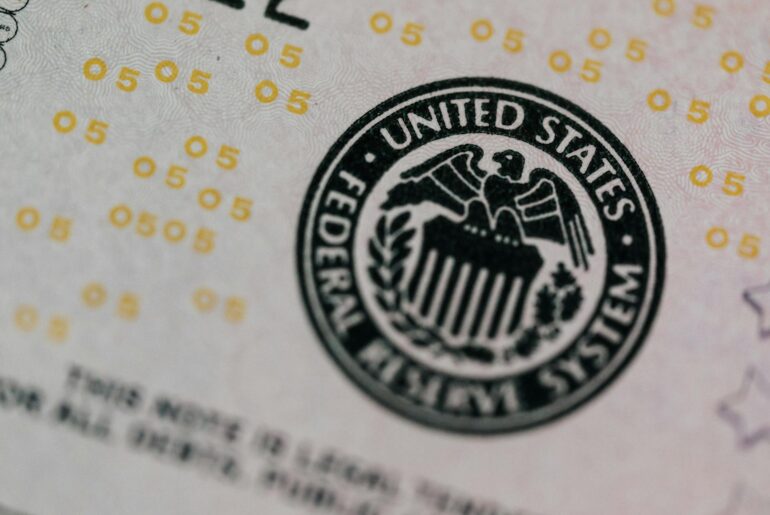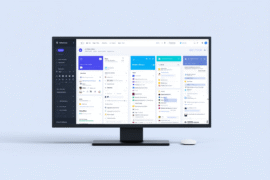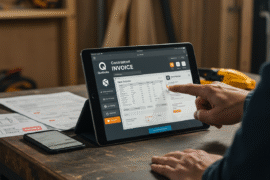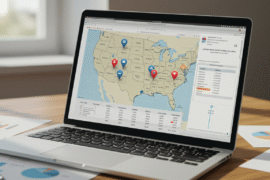This article may contain references to products or services from one or more of our advertisers or partners. We may receive compensation when you click on links to those products or services. Nonetheless, our opinions are our own.
The information presented in this article is accurate to the best of our knowledge at the time of publication. However, information is subject to change, and no guarantees are made about the continued accuracy or completeness of this content after its publication date.
Inflation affects nearly every aspect of daily life, from the cost of groceries to the price of manufactured goods. Recent findings from the Federal Reserve indicate that tariffs are shaping inflation trends. As international trade policies shift, businesses and consumers experience higher costs, leading to economic adjustments at various levels.
Understanding how tariffs influence inflation can provide insight into future pricing trends and financial planning strategies. By examining recent data and industry impacts, it becomes possible to anticipate changes and make informed financial decisions.
How the Federal Reserve Tracks Inflation
The Federal Reserve monitors inflation using key economic indicators, the most notable being the Personal Consumption Expenditures (PCE) Price Index and the Consumer Price Index (CPI). These measures track changes in the cost of goods and services over time, providing insight into overall price stability.
According to recent reports, inflationary pressures linked to tariffs are most apparent in consumer goods that rely heavily on imported materials. Industries such as technology, textiles, and manufacturing have been particularly affected, with companies passing higher costs onto consumers.
| Inflation Indicator | Annual Increase | Impact from Tariffs |
|---|---|---|
| PCE Price Index | 2.8% | Moderate |
| Consumer Price Index | 3.2% | Significant |
While tariffs are not the sole driver of inflation, they contribute to rising costs in specific sectors, influencing overall price trends.
How Tariffs Influence Consumer Prices
Tariffs function as taxes on imported goods, increasing expenses for businesses that depend on foreign materials. These added costs often reach consumers, affecting household budgets and purchasing decisions.
Several key factors contribute to tariff-driven inflation:
- Higher production expenses – When essential raw materials become more expensive, manufacturers raise prices to maintain profit margins.
- Increased retail costs – Businesses adjust pricing strategies to compensate for elevated import fees.
- Potential supply chain disruptions – Restrictions on imports can reduce product availability, contributing to further price hikes.
Recent pricing trends illustrate how tariffs have influenced different product categories:
| Product Type | Average Price Increase | Tariff Rate (%) |
|---|---|---|
| Electronics | $50 | 25% |
| Clothing | $30 | 15% |
| Automobiles | $500 | 10% |
These changes reflect a broader economic adjustment, where tariffs lead to cost increases that affect multiple industries and consumer spending habits.
Voted "Best Overall Budgeting App" by Forbes and WSJ
Monarch Money helps you budget, track spending, set goals, and plan your financial future—all in one app.
Get 50% OFF your first year with code MONARCHVIP
Recognizing Inflationary Trends in Everyday Purchases
Keeping an eye on shifting prices can help consumers anticipate and adjust for inflation. Several warning signs indicate that tariffs may be contributing to higher costs:
- More expensive imported goods – If everyday items increase in price, tariffs could be a contributing factor.
- Reduced product selection – Some companies may limit availability due to higher import costs.
- Slower wage growth compared to rising costs – When salaries remain stable while expenses increase, household budgets become strained.
Recent pricing changes in common consumer goods reflect these trends:
| Item | Previous Price | Current Price |
|---|---|---|
| Coffee (per lb) | $8.00 | $10.00 |
| Steel (per ton) | $500.00 | $700.00 |
| Electronics | $1,000.00 | $1,200.00 |
Recognizing these shifts can help individuals adjust spending habits and financial plans accordingly.
Managing Costs During Inflationary Periods
As prices fluctuate, adapting financial strategies can help mitigate the effects of inflation. Some approaches to consider include:
- Adjusting budgets – Identifying non-essential expenses and prioritizing necessary purchases.
- Exploring alternative brands or domestic options – Some locally produced goods may be less affected by tariffs.
- Timing major purchases wisely – Buying products before anticipated price increases can help minimize costs.
- Negotiating recurring expenses – Seeking better rates on essential services can help balance overall spending.
A well-planned budget can make a difference in managing inflation-related expenses:
| Expense Category | Current Spend | Target Reduction |
|---|---|---|
| Groceries | $400 | $350 |
| Utilities | $200 | $180 |
| Dining Out | $150 | $100 |
Minor adjustments in spending can contribute to long-term financial stability, mainly when external economic pressures affect household budgets.
The Federal Reserve’s Role in Addressing Inflation
The Federal Reserve implements monetary policies to maintain economic stability in response to rising inflation. Key measures include:
- Adjusting interest rates – Increasing borrowing costs can reduce excessive spending and slow inflation.
- Monitoring labor market trends – Wage growth and employment rates influence price stability.
- Assessing long-term economic conditions – Policymakers analyze data to determine appropriate actions.
While these efforts aim to control inflation, external factors such as tariffs, supply chain issues, and consumer demand continue to shape pricing trends.
Looking Ahead: Preparing for Future Price Changes
As inflationary pressures persist, staying informed and proactive can help individuals and businesses navigate economic changes. Monitoring price trends, adjusting financial strategies, and considering alternative purchasing options can help manage expenses.
Understanding the connection between tariffs and inflation provides valuable insight into future economic conditions. By recognizing patterns and planning accordingly, consumers and businesses can make more informed financial decisions.

Reviewed and edited by Albert Fang.
See a typo or want to suggest an edit/revision to the content? Use the contact us form to provide feedback.
At FangWallet, we value editorial integrity and open collaboration in curating quality content for readers to enjoy. Much appreciated for the assist.
Did you like our article and find it insightful? We encourage sharing the article link with family and friends to benefit as well - better yet, sharing on social media. Thank you for the support! 🍉
Article Title: The Impact of Tariffs on Inflation and Consumer Prices
https://fangwallet.com/2025/04/01/impact-of-tariffs/The FangWallet Promise
FangWallet is an editorially independent resource - founded on breaking down challenging financial concepts for anyone to understand since 2014. While we adhere to editorial integrity, note that this post may contain references to products from our partners.
The FangWallet promise is always to have your best interest in mind and be transparent and honest about the financial picture.
Become an Insider

Subscribe to get a free daily budget planner printable to help get your money on track!
Make passive money the right way. No spam.
Editorial Disclaimer: The editorial content on this page is not provided by any of the companies mentioned. The opinions expressed here are the author's alone.
The content of this website is for informational purposes only and does not represent investment advice, or an offer or solicitation to buy or sell any security, investment, or product. Investors are encouraged to do their own due diligence, and, if necessary, consult professional advising before making any investment decisions. Investing involves a high degree of risk, and financial losses may occur including the potential loss of principal.
Source Citation References:
+ Inspo
There are no additional citations or references to note for this article at this time.












































